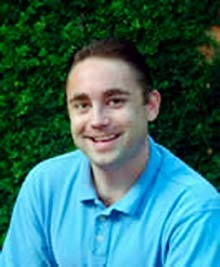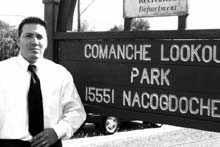District 10 pits upstarts versus veterans
| Chip Haass |
| Steve Schauer |
| Joey Hernandez |
In 2005, Joey Hernandez has assumed Haass' former role as the outsider, the energetic political novice railing against the status quo. A military brat who was born in Alabama and later lived in Panama and Germany, Hernandez is an intelligence analyst for the Air Force Reserves.
Steven Schauer has taken the opposite tack, proudly contending that he possesses more government experience than either of his opponents. Schauer has served as director of communications for Mayor Ed Garza and a budget officer for the state's Office of Budget and Planning. An unabashed fiscal conservative, he says he entered the fray this year - rather than waiting two years for the seat to become vacant - because "the incumbent is out of step with the district."
Current: Growth in District 10 has created concerns about the quality and availability of the district's schools and parks. How do you assess the situation?
Chip Haass: We passed the Safer Schools Initiative which helped them with their outside infrastructure: It got new life vests for the student patrols, it got flashers up outside the schools, it rearranged school zones from a speed-limit standpoint to fit better with the schools.
In two years, there'll be a huge need for new schools, but I think the North East Independent School District is ahead of the curve. They've got the sites picked out and they have the funding set aside to build them.
With parks, we've set aside money to build one new park in Mud Creek, and we expanded McLain and Friesenhahn. Since then, we've found city general-fund and Parks & Rec dollars to build another park by Royal Ridge Neighborhood Association in the northeastern portion of the district. We put a skating facility out at LBJ, and LBJ is still the only public swimming pool on the North Side that's City-funded. We have a new library going in at Comanche Lookout Park and added about $850,000 worth of park improvements surrounding the library area. But the real goal is the Salado Creek linear park program. In District 10, it will account for about four-and-a-half miles of linear hike-and-bike and walking trails.
Joey Hernandez: I have children in the district, and every time the kids want to go to the park, we have to leave this area and drive five miles to Live Oak Park. We have to start focusing on building parks that entire families can enjoy. We can do that because we have the funding in the city. We just choose to focus on areas other than where it needs to be.
As far as education, I'd like the city to leverage itself to help with early childhood education. To meet pre-K requirements in this school district, the family has to make less than $35,000 a year or the child has to be an ESL student. So you have a lot of families who need it, but miss the criteria. Also, the pre-K programs are half-day, so one of the parents ends up having to stay home.
Steven Schauer: I think we need to recognize that NEISD is a jewel and we need a councilman who will work closely with the school district. As far as parks are concerned, it's horrible in District 10. If you look at what the City qualifies as the North East section of the city - District 10 and a portion of District 9 - it's less than nine acres per 1,000 residents. The national average calls for 16 acres per 1,000 residents.
What I'm proposing is a long-term strategic plan that Dallas is undertaking. It's a 15-to-20-year plan with accountability benchmarks built into it. You stretch it out over that long a period and it takes care of the uncertainty caused by City Council turnover. Also, by spreading it out, you minimize the annual burden on the taxpayer to actually achieve what we're trying to do.
Current: What should be done about the glut of sexually oriented businesses in District 10?
CH: My number-one goal would be voluntary compliance. If the club owners themselves would regulate their establishments a little bit, we wouldn't have a problem. Where I have issues is in the thoroughfares of the district, not on the highways: where seedy establishments don't even have security, where people leave drunk as can be and kill people on their way home, where vandalism takes place to cars that are parked in neighborhoods close by, and where prostitution takes place. But it's really about property values and crime rates. It's not a moral issue. If they put in the proper police or security patrol, hopefully the crime will go away.
JH: The best way to proceed with this is to change the sign ordinances. If you drive by a McDonald's and you don't see the golden arches, you won't know there's a McDonald's by the side of the road. It's the same thing with these clubs. You see so many pictures of women laying down or a woman in a bikini, and it says these things. If you take that ability to advertise away from this industry, they will go down.
If we've created an environment in this city where those types of clubs flourish, it's because we're not providing the right kinds of jobs. It's an economic issue that should have been addressed a long time ago.
SS: I think the incumbent is going about it in the wrong direction. Making a stripper wear an ID badge isn't going to make the clubs go away. It's an economic issue.
Near Perrin Beitel and Naco-Perrin, from the late '70s through the '80s, there was a Mr. Gatti's pizza parlor. By the late '80s or early '90s, that place closed. It was a vacant building, and a little bit later on, a strip club came into the building.
The current councilman seems to blame a lot of the neighborhood problems on the strip clubs. I think it's the other way around. Some of the neighborhoods were already declining. The strip club didn't close Mr. Gatti's down, Mr. Gatti's closed because it couldn't make money there. We need a councilman who will do the difficult work of bringing economic revitalization to our neighborhoods. •




